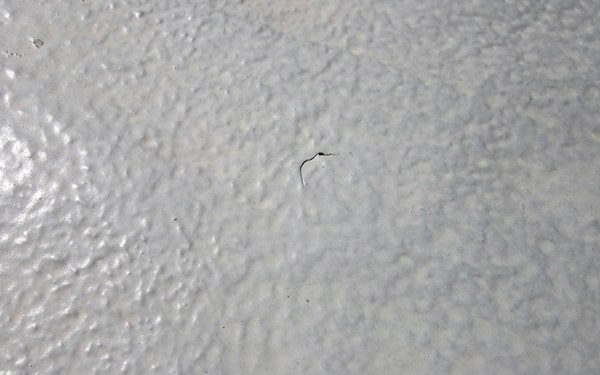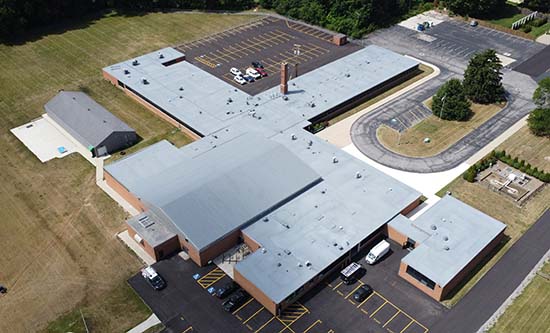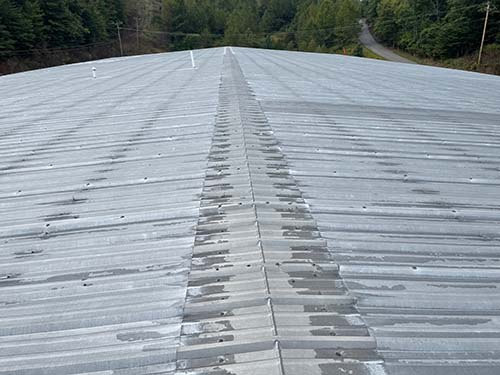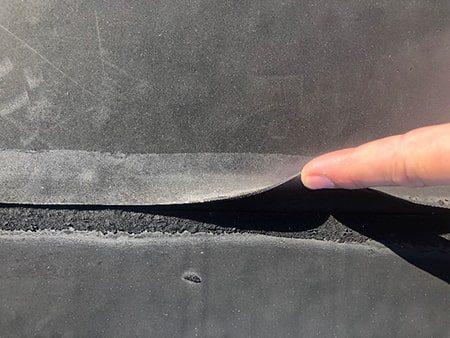People always say, “We got a spray foam roof installed with a 20-year warranty, so why do I need a maintenance contract”? We’ll solve this debate in this article.
The NRCA (National Roofing Contractor’s Association) recommends all roofing systems get inspected twice per year, in the Spring and Fall.
The reason is that in the Spring, you’re seeing what happened over the Winter and preparing your roof to handle the upcoming rainy season.
Inspections should happen in the Fall to eliminate the leaves that could block drainage, but mostly to prepare your roof for the Winter.
In this article, you’ll learn:
- Scenarios when a warranty wouldn’t cover damages on a spray foam roof
- The benefits of a full-time service department
- What’s the cost of maintenance? Is it tied into the proposal? And is it needed to maintain the warranty?
- What happens once the warranty expires?
- How does the maintenance on a spray foam roof compare to other roofing systems?
Scenarios when a warranty wouldn’t cover damages on a spray foam roof
A common scenario we see is the damage that occurs because of clogged drains. People chuck bottles and shoes onto roofs (this happens at High School’s all the time!). Leaves and branches accumulate quickly.
The drain gets clogged, water has nowhere to go, and the roof goes underwater. This is known as “ponding or standing” water. Ponding water can significantly reduce the life of a roofing system.
Damage or repairs caused by clogged drains or ponding water will not be covered under any warranty. These are maintenance issues that could be avoided.
Think of it like your car. You need to change the oil every 3000 miles. If you ignore this, eventually, the engine won’t be able to perform correctly. If the motor blows, would it be covered under warranty?
Definitely not.
If you’ve never seen a roof under 2 inches of water caused by clogged drains, you need to see this quick 1-minute video:
What are the benefits of a full-time service department
Some commercial contractors have a full-time service department…and some don’t. For the ones that don’t, they will pull a guy off a job, he will have minimal information about your project and will return to production once service is complete.
There’s an advantage to companies with full-time service departments:
- They specialize in service-type of repairs. They are experts in locating the cause of a leak.
- They have been on your roof before. They will have notes on prior repairs and can see if they are holding up. They will know other areas that have been noted to look out for.
- They are always available.
A full-time service department is similar to your relationship with a dentist who you’ve been going to for years. They know all prior work that’s been completed. They know teeth that are noted to look out for. They have x-rays to look back on for progress.
A company without a full-time service department is like going to a new dentist every time and for them to know everything about your dental history.
What’s the cost of maintenance? Is it tied into the proposal? And is it needed to maintain a warranty?

The cost of maintenance to clean out gutters, make small repairs, document everything, and provide a report is a one-time fee. The cost is usually $300 – $500 per visit, but several factors can influence the price, such as:
- How much travel is involved?
- How big is the roof?
- How complicated the scope of work is projected to be?
The cost of maintenance is not included in the proposal. A maintenance agreement is entered into with the building owner after the spray foam roof is installed.
A maintenance agreement with your roofer is not required to maintain a warranty. However, any damage caused by ignorance (or Acts of God), won’t be covered.
Manufacturers know what they are doing with warranties. They know that if their foam and coatings are installed correctly, and at the correct thickness, they will, at the absolute minimum, last the warranty length.
A properly installed spray foam roof with annual or semi-annual maintenance will most likely last beyond its initial warranty length.
What happens once the warranty expires?

When the warranty ends, the roof can be recoated, putting the roof under a brand-new warranty.
For example, say you got a spray foam roof with a 15-year warranty. The thickness of the coating that protects a spray foam roof always determines the warranty length.
A typical silicone-coated roof with a 15-year warranty would get a coating thickness of 25 mils.
After 15 years, that thickness will diminish due to the natural weathering it is subjected to.
In year 15, a contractor will clean the roof, make any necessary repairs, and install a new 25-mil thickness of coating. The building owner would then get a new 15-year warranty.
This process can be repeated over and over again.
The price of coating is volatile, but for a ballpark number, it could cost 30% – 50% of the original installation.
The warranty is transferrable if the building owner happens to sell the building.
How does the maintenance on a spray foam roof compare to other roofing systems?
Maintenance on a spray foam roof is much easier than other roofing systems. It’s because a foam roof doesn’t use fasteners or seams, and is one continuous, monolithic layer.
Fasteners
Fasteners are essentially screws that hold a roof in place. These are used on single-ply roofs such as TPO and EPDM, as well as Metal roofs. There could be thousands of fasteners on a roof. It would take a ton of time to look at each fastener and determine if one is backing out or is installed correctly.

Seams
A major cause of roof leaks is when seams come apart. The roof expands and contracts with changing temperatures. That’s a lot of stress when this happens every single day for years on end.
Seams can gradually loosen, allow wind and water to get underneath, and eventually lose adhesion altogether. It’s harder to maintain a roof with seams because they’re covering the entire roof, and it’s hard to see a loss of adhesion within the seams.

Spray foam maintenance
Spray foam roofs are easy to maintain simply because they don’t have seams or fasteners. It’s one layer, and you can easily see if there’s a puncture, crack, or hole in it.
The repair is simple too. A contractor would cut around a hole, dry the area, and fill it with caulk or coating.
And that’s it.
Spray foam has closed-cell properties, meaning water will sit in a hole and not travel through the system.
If water gets underneath a single-ply or metal roof, that water can travel left, right, or down and saturate the insulation below. A small water-entry point can saturate a large roof area with open-cell insulation, such as the popular polyiso-board.
Conclusion
- You should have someone look at your roof every Spring and Fall
- Avoidable damages will not be covered under warranty
- Choose a roofing contractor with a full-time service department. If not, it’s like going to a new dentist every checkup
- A maintenance contract is not needed to maintain a warranty, but with roofs “out of sight, out of mind,” a simple mistake such as not cleaning gutters can lead to a large repair bill
- A spray foam roof is very easy to maintain because it doesn’t have fasteners or seams and because it has closed-cell properties


